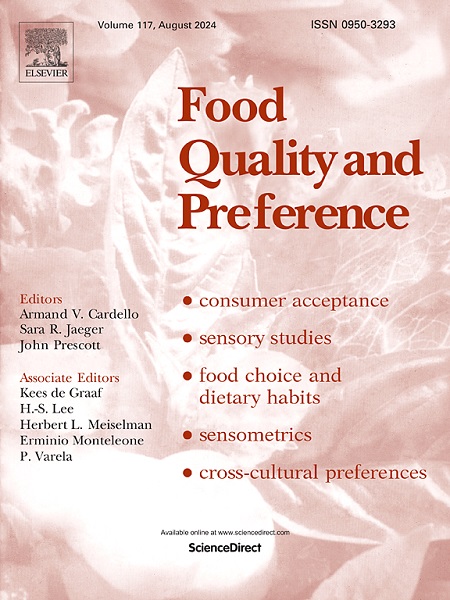A choice experiment for different preparation methods of eggs: The impact of sensory, health, and animal welfare
IF 4.9
1区 农林科学
Q1 FOOD SCIENCE & TECHNOLOGY
引用次数: 0
Abstract
This study investigated the effect of cooking methods on the willingness to pay (WTP) for the sterilization method.
The choice experiment consisted of eight attributes; yolk color (yellow vs. deep yellow), grade (special vs. first grade), omega-3 (3 levels), egg sterilization method (no sterilization vs. sodium hypochlorite vs. pasteurization), hen feed (antibiotics vs. antibiotic-free vs. organic), hen’s breeding method (caged vs. cage-free), production area (in-prefecture vs. out of prefecture), and price (5 levels).
The online survey included 1,000 Japanese consumers. A within-subject design was employed in which everyone responded under the assumptions of eating a hard-boiled egg, a soft-boiled egg, and a raw egg.
As the degree of heating decreased, the WTP for the sterilization attribute became higher. Sodium hypochlorite was always higher than pasteurization. As the degree of rawness increased, the WTP for antibiotic-free and organic feeds rose. However, the organic feed had a lower WTP than the antibiotic-free feed. When eating raw eggs, the WTP for antibiotic-free was the second most important compared with the sterilization. As the degree of rawness increased, the WTP for the deep yellow color of the yolk rose, and finally reached three times higher when eating raw eggs than when eating hard-boiled eggs. The WTP for local production was not significantly different in any case. Omega-3 had a significant negative WTP only for raw eggs. Cage-free had a significant negative WTP only for boiled eggs.
求助全文
约1分钟内获得全文
求助全文
来源期刊

Food Quality and Preference
工程技术-食品科技
CiteScore
10.40
自引率
15.10%
发文量
263
审稿时长
38 days
期刊介绍:
Food Quality and Preference is a journal devoted to sensory, consumer and behavioural research in food and non-food products. It publishes original research, critical reviews, and short communications in sensory and consumer science, and sensometrics. In addition, the journal publishes special invited issues on important timely topics and from relevant conferences. These are aimed at bridging the gap between research and application, bringing together authors and readers in consumer and market research, sensory science, sensometrics and sensory evaluation, nutrition and food choice, as well as food research, product development and sensory quality assurance. Submissions to Food Quality and Preference are limited to papers that include some form of human measurement; papers that are limited to physical/chemical measures or the routine application of sensory, consumer or econometric analysis will not be considered unless they specifically make a novel scientific contribution in line with the journal''s coverage as outlined below.
 求助内容:
求助内容: 应助结果提醒方式:
应助结果提醒方式:


